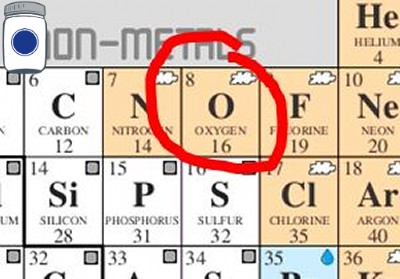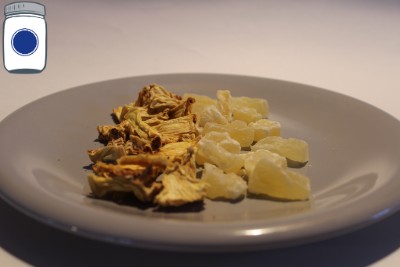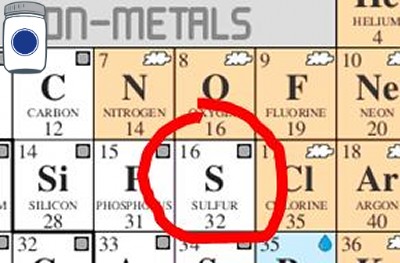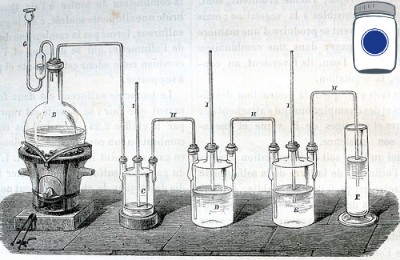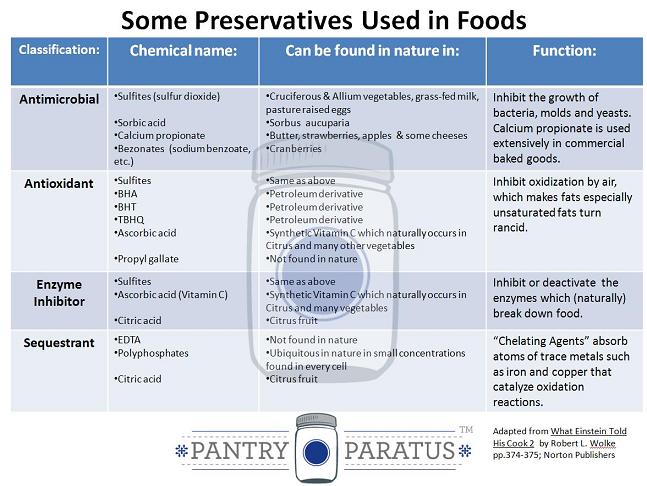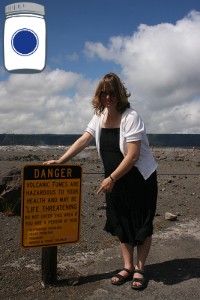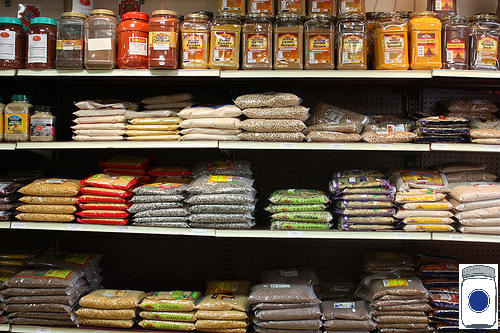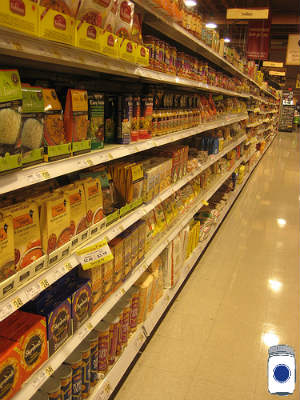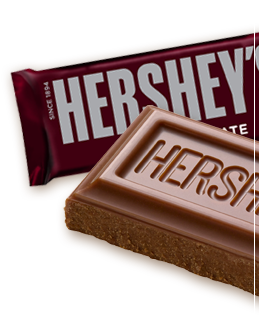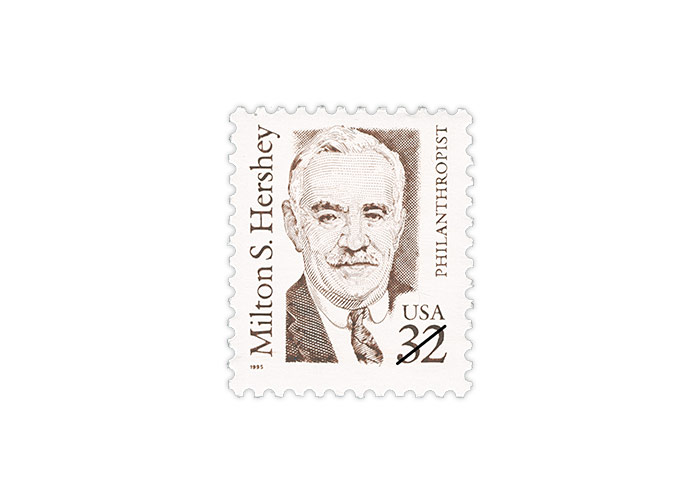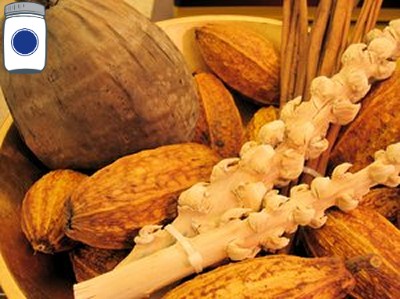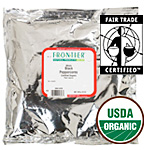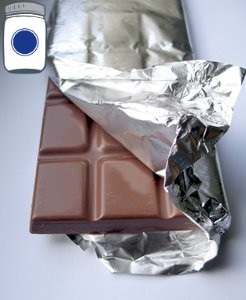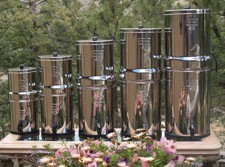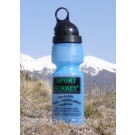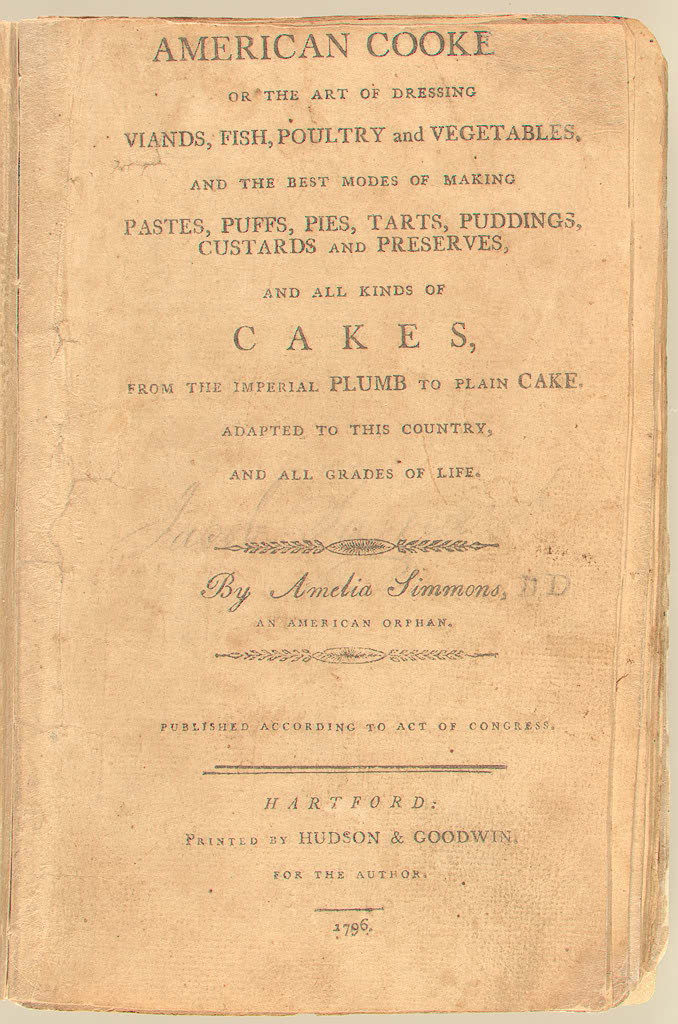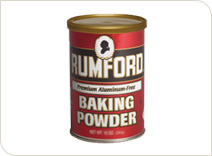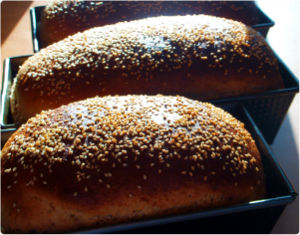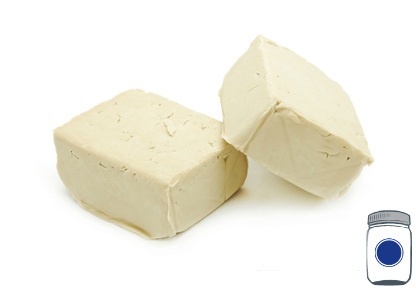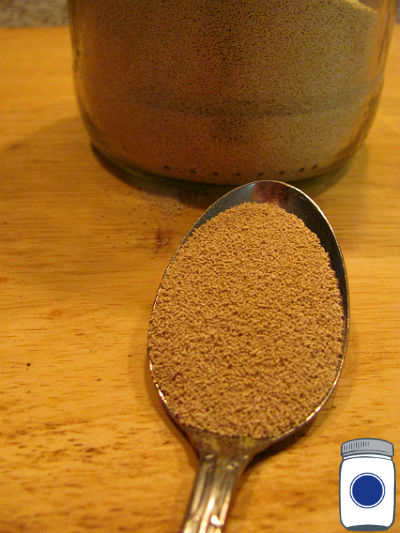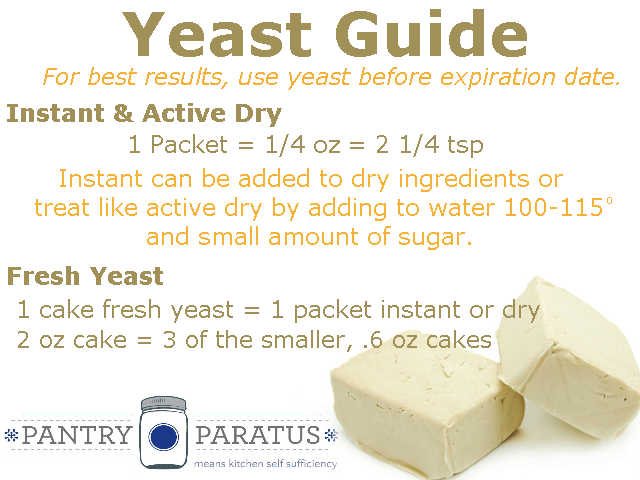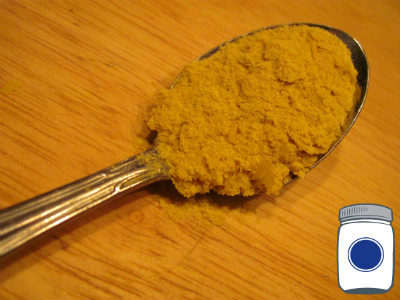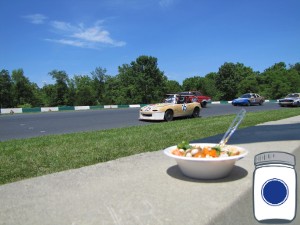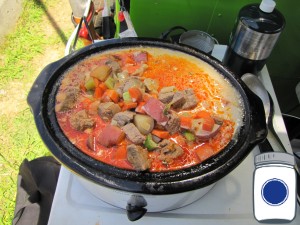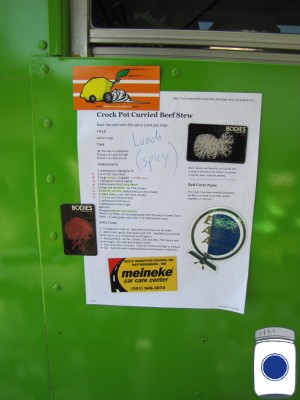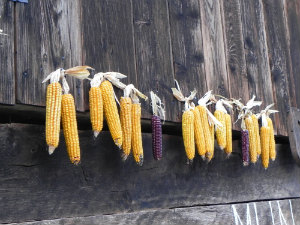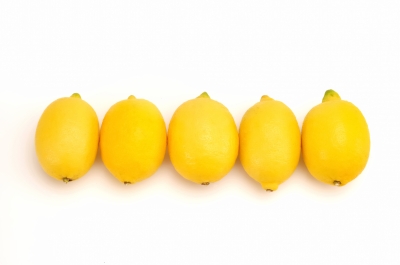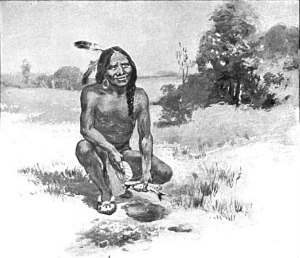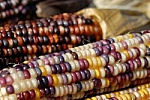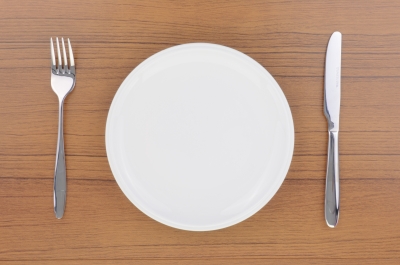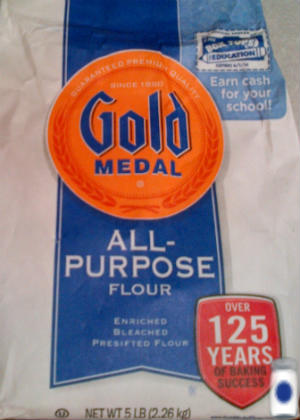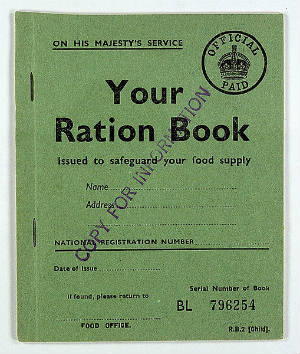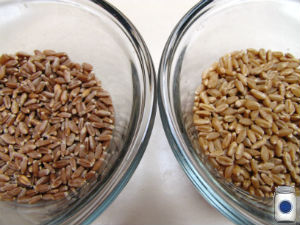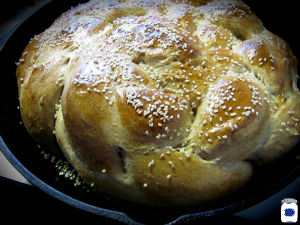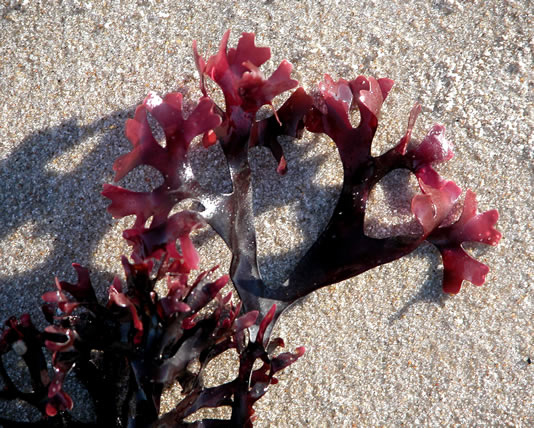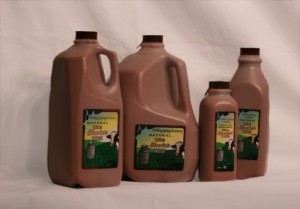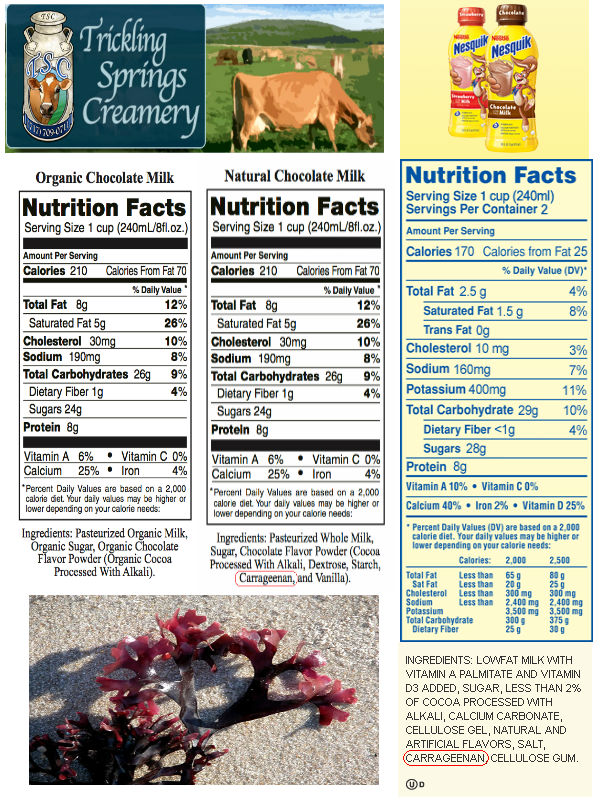Sulfur, Part II
Why is it found on dehydrated food?
Though sulfur generally gets its bad press from the quintessential “rotten egg” smell, it by itself is odorless until it mixes with oxygen to become sulfur dioxide. We discussed in the Sulfur, Part I that the 16th element works as an antimicrobial agent in dehydrated food, but that is not its only function. “The rancidity, rotting and deterioration of all foods is caused, in part by oxygen in the air stealing elections from food molecules and breaking down those molecules” (Joachim & Schloss, p. 448).
Sulfur, often found on labels as sulfur dioxide, is under the class of compounds call sulfites (which differs from sulfates). While stopping bad bacteria and microbes certainly helps in controlling the decaying process of food, there is more than one force advancing the decaying process. I put up a cool (although not exhaustive) chart in Sulfur, Part I about common food preservatives. Note that sulfites pull double duty as both antimicrobial agents as well as antioxidant agents among the four listed categories: Antimicrobial, Antioxident, Enzyme Inhibitor and Sequestrant (if you took sugar as it is used traditionally in preserving you could also add “Descecant” to the list as it works for both hams and Twinkies).
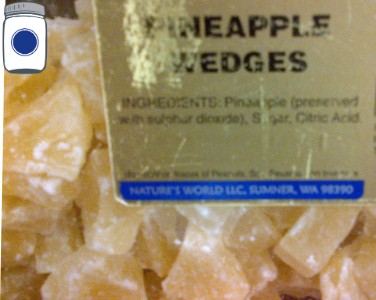
Label from store bought dehydrated pineapple chunks: Pineapple, sulfur dioxide (antioxidant), sugar (desecant) and Citric Acid (enzyme inhibitor).
Sulfur fun fact: “In an overcooked hard-boiled egg, the yolk will have turned a gray-green color. That’s caused by a chemical reaction between the traces of iron in the yolk and the traces of sulfur in the white. The longer they are heated together, the greener the yolk will get” (Parsons, 124).
Homemade dehydrated pineapple on the left (no preservatives) and store bought
on the right (see label in above photo).
The sulfur, especially in its sulfur dioxide configuration, shows by its name that it has a powerful role to play for abating oxygen—one of the biggest things that can be done to preserve food. If you have ever lived in the rustbelt where roads are carpet bombed with salt, then you know about oxidation decomposing a vehicle composed of ferrous metals. The same inescapable grip of the Second Law of Thermodynamics is also true for food, but the process is much faster.
One thing is inevitable, however: all foods will eventually spoil, rot, decompose, disintegrate, crumble, putrefy, turn rancid, or become just plain yucky. It’s Nature’s law, for dust they art and unto dust shalt they return. Proteins will turn soft, squishy, putrid, and green: carbohydrates will ferment and sour; fats will turn rancid (Wolke, 2005, p. 373).
Oxygen is everywhere; in fact it is the third most abundant element in the universe, and it is always looking to hook up with other elements or molecules. The chemical name for what happens to rusty cars or brown apples is oxidization (only the process with apples is accelerated by active enzymes).
Oxidization = Decomposition
As oxygen encounters other elements and molecules it looks to satisfy its need for another electron. When the oxygen atom pries that electron free from another substance, the victim is said to have been “oxidized” which leads to further decomposition. In food this leads to decay as it does in your body as well (elements and compounds that are exceptionally bent on this snatchery are called “free radicals” when they are in your body).
What defense is there against these oxidizing agents? Antioxidants of course, and sulfur is a natural one. Sulfur gladly gives up an electron (or two electrons in the case of sulfur dioxide) so that the food it comes into contact with will have a buffer against further oxidization. “An antioxidant is an atom or molecule that can neutralize a free radical by giving it the electron it wants before it steals one from something vital. Among the antioxidants we obtain from our foods are vitamins C and E, beta-carotene (which turns into Vitamin A in the body)” (Wolke, 2002, p. 18). Sulfur is a natural way to prevent oxidization and BHT (butylated hydroxytoluene) and BHA (butylated hydroxyanisole) are artificial antioxidants that are derived from petroleum. All three fall under GRAS (Generally Regarded As Safe) status by your USDA.
We are all subject to the Second Law of Thermodynamics and everything and everyone that is carbon based will decay. However, in response to the question about why sulfur is used in dehydrated food, my initial answer was (partially) correct. Sulfur is used to preserve color in dehydrated fruit—this is clearly attributed to its antioxidant function. Yet, sulfur also acts as an antimicrobial to preserve foods by keeping bad bacteria at bay in all manner of foods from wine to molasses.
Wilson
Pro Deo et Patria
Works Cited:
Joachim, D., & Schloss, A. (2008). The science of good food. (p. 239). Toronto: Robert Rose.
Parsons, R. (2001). How to read a french fry. (p. 124). Boston: Houghton Mifflin Company.
Wolke, R. (2002). What Einstein told his cook 1: kitchen science explained. (p. 18). New York: W. W. Norton & Company.
Wolke, R. (2005). What Einstein told his cook 2: Further adventures in kitchen science. (p. 375). New York: W. W. Norton & Company.
Photo Credits:
Oxygen: Periodic Table of elements taken from the public domain: http://www.wpclipart.com/education/supplies/periodic_table_of_the_elements.png.html
Antioxidant: Photo by Pantry Paratus
Homemade vs storebought pineapple: Photo by Pantry Paratus
Further Reading:
Great article on the difference between sulfites and sulfates (as pertaining to the potential health hazard sulfites can pose to asthmatics). http://www.mineralresourcesint.com/docs/quality/Sulfites%20vs.Sulfate.pdf
Chemistry 101 how chemicals get those suffixes: http://science.widener.edu/svb/pset/nomen_b.html
Proviso:
Nothing in this blog constitutes medical advice. You should consult your own physician before making any dietary changes. Statements in this blog may or may not be congruent with current USDA or FDA guidance.

